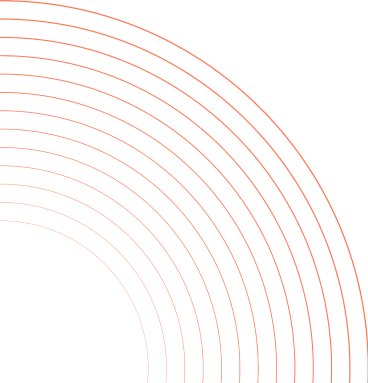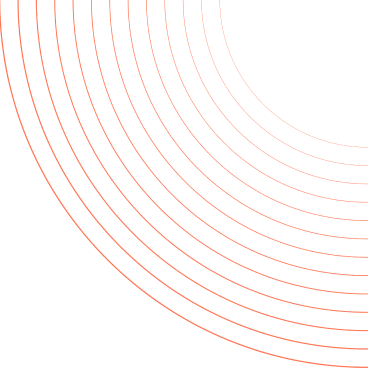5 Trends in the Windows and Doors Replacement Market in 2025
- Home
- 5 Trends in the Windows and Doors Replacement Market in 2025





James Miller
May 15, 2025
The U.S. residential fenestration market is being reshaped by tightening energy standards, an aging housing stock, and new technology. Homeowners and remodelers are increasingly prioritizing products that cut utility bills, add home value, and integrate smart features. At the same time, stricter building codes and incentives (like federal tax credits) are pushing manufacturers to offer greener, higher-performance windows and doors. These forces are slowing the new-construction boom (housing starts dipped in 2024 but underpin a steady replacement market fueled by aging homes. Here are five key trends shaping residential window and door replacement in 2025.
Cutting energy use remains the top concern for homeowners. In recent surveys, over 80% of buyers rated ENERGY STAR-rated windows as “essential or desirable,” far above other features. Products with triple- or even quadruple-pane glass, low-emissivity coatings and tight frames are in high demand. At the same time, consumers want convenience and connectivity: smart windows and doors with tint-adjusting glass or built-in sensors are emerging. For example, homeowners can now control electrochromic glass tints via smartphone or voice command to optimize light and heat. In fact, market analyses note that the move toward smart homes is “fueling the adoption of energy-efficient products, including double-glazed and low-emissivity windows”. On the aesthetic side, clean, minimalist designs are gaining ground: ultra-thin frames (often in bold colors or dark finishes) maximize natural light and view. Modern buyers are seeking customizable looks—everything from custom-sized black-framed windows to large picture-glass doors—to match contemporary styles. In short, 2025 buyers want high R‑values and high tech, without sacrificing style.
Material choice is a key consideration in replacements. Vinyl windows still dominate replacements due to low cost and maintenance, making up the largest share of installed units. Vinyl frames are inexpensive and require little upkeep, though they can warp or fade over decades. Fiberglass and composite frames are gaining market share for their superior performance and durability. Fiberglass offers the look and insulation of wood but with far less expansion in heat; it now “better resembles natural wood” while resisting rot. In fact, analysts expect fiberglass window and door sales to see “healthy gains” in the next few years due to their combination of durability, wood-like aesthetics and energy efficiency. High-end composites (such as engineered-wood frames or reinforced polymer blends) also appeal to eco-minded buyers, combining recycled or natural fibers with resins for strength and thermal efficiency.
By contrast, aluminum frames have become less common in cold climates, since pure aluminum conducts heat easily, though they remain popular in certain regions (e.g. in the South or for large folding doors) for their slim profiles and strength. Wood frames – either untreated or aluminum-clad – still appeal for classic looks and custom finishes, but their higher price and maintenance needs mean they tend to be chosen by luxury buyers. Overall, industry reports note that consumers are moving toward higher-value vinyl and fiberglass products that meet energy standards, since both materials “offer good insulation and are more resistant to warping,” which helps keep a tight seal and save energy. In practice, this means many homeowners are willing to pay a premium for fiberglass or composite frames if it means better longevity and lower bills.
Environmental concerns are driving a push for greener products and practices. Many homeowners now expect new windows and doors to carry green certifications and meet the latest efficiency codes. ENERGY STAR labels, Indoor air quality certifications, and even LEED or Passive House compliance are marketing points for replacement products. Federal incentives reinforce this: the 2023–2032 tax credit covers 30% of the cost (up to $600/year) of qualifying ENERGY STAR “Most Efficient” windows and doors. Builders also watch for state and local incentives (for example, Florida’s tax holiday on “hurricane-hardening” windows boosted replacement demand in that region.
Manufacturers, in turn, are promoting recycled content and lifecycle transparency. Glass recycling is increasingly common – recycled flat glass demand is so high that industry experts note there’s a strong business case for reclaiming scrap glass rather than landfilling it. Vinyl frame makers are highlighting post-consumer recycling programs and lifecycle analyses (LCAs) to counter the perception that PVC is “non-green.” Some companies even offer take-back programs for old vinyl windows or use wood from sustainably managed forests. According to one market study, a quarter-million tons of post-consumer PVC windows are recycled each year in Europe, and U.S. manufacturers are catching on with similar initiatives. In practice, home energy auditors report many consumers explicitly ask for sustainable fenestration: roughly one-third of homeowners express major concerns about their home’s energy/environmental performance, and a significant share plan upgrades accordingly. In short, windows and doors are among the highest-profile ways to “green” a home, and 2025 buyers often choose options (double- or triple-glazing, recycled frames, etc.) that minimize carbon footprint and maximize long-term efficiency.
Beyond core performance, smart and high-tech features are infiltrating windows and doors. Smart locks and security are now ubiquitous on entry doors: fingerprint readers, Bluetooth or Wi-Fi-enabled deadbolts, and integration with home automation systems are standard options. The smart lock market itself is booming (projected to jump from about $2.7 billion in 2024 to $3.0 billion in 2025 globally as more consumers retrofit or replace doors. Meanwhile, windows are getting “smarter” too. Dynamic glazing – sometimes called smart glass or electrochromic glass – can automatically tint or clear in response to sunlight, heat, or user commands. Industry experts predict a significant increase in the use of such smart windows in 2025, since they greatly reduce cooling/heating loads by modulating solar gain. Other innovations include built-in shades or blinds that raise/lower at the touch of a button, and sensors that can detect break-ins or trigger storm shutters.
Integration with smart homes is a big factor: modern replacement projects often pair new windows/doors with smartphone apps and voice assistants for full automation. For example, a homeowner might have windows that “remember” climate preferences or that can be closed remotely in a storm. We’re also seeing cutting-edge glass: self-cleaning coatings (using nanotech or ultraviolet catalysts), vacuum-insulated glazing units (VIGs with ceramic spacers for super-thin, high-R glazing), and even transparent solar cells that harvest energy from sunlight. In practice, these technologies are still in early adoption, but the trend is clear: windows and doors are increasingly treated like part of the home’s IT system, not just static fixtures. This aligns with surveys showing homeowners anticipate new windows will “manage [indoor] environments with greater precision,” from tint control to noise reduction.
Overall market growth for windows and doors is moderate. The mid‑2020s aren’t expected to see a boom in replacements (indeed, FGIA forecasts remodeling window demand to shrink about 1% in 2025 after an 8% drop in 2023. High interest rates and economic uncertainty briefly cooled building permits. However, long-term drivers keep the replacement market healthy. U.S. homes are older than ever (the median age hit about 44 years in 2023, meaning many original windows are failing. As industry analysts note, a large segment of houses built during the early-2000s boom is now entering “prime remodeling age” (20–39 years old), which typically spurs replacement spending. Home equity still sits near record highs, and many owners prefer to upgrade in place rather than move.
Repair-and-remodel projects are expected to outpace new construction over the next few years. Principia Consulting projects that single-family window demand will inch up through 2025, driven by the repair segment even as new-build remains flat. In fact, research firm Freedonia notes that key factors like IRA tax credits, energy codes and storm-proofing mandates will specifically boost replacement and renovation work. For example, Florida alone (about 10% of U.S. window demand) recently enacted a home-hardening tax holiday, which should stimulate window upgrades in hurricane-prone areas.
In summary, while construction cycles ebb and flow, the long‑term outlook is steady growth for replacement products. Homeowners are slowly but surely trading out drafty, outdated windows and doors for new units that save energy, look modern, and connect with their smart homes. Industry watchers expect that by 2030, U.S. fenestration demand will resume a gentle climb as the housing market recovers, but even today’s market reflects the continuing need to update America’s homes.
Sources: Recent industry forecasts and surveys provide the basis for these trends: eyeonhousing.org grandviewresearch.com, freedoniagroup.com, windowanddoorshop.com, principiaconsulting.com.
The cited data include market research reports (FGIA, Freedonia, Principia) and expert analyses of homeowner preferences and building codes, with an emphasis on U.S. residential market conditions.
James Miller works as a Customer Support Specialist at Windsketch, a software company for the window and door industry. With a knack for problem-solving and a deep understanding of Windsketch's products, James efficiently resolves client issues, ensuring they get the most out of their software. His technical skills and customer-focused approach have made him a valuable asset to both Windsketch and its customers.